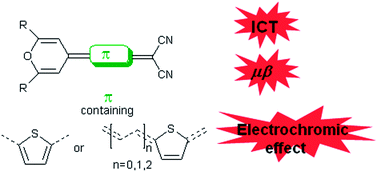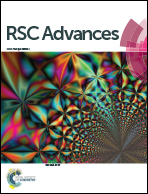Polarization, second-order nonlinear optical properties and electrochromism in 4H-pyranylidene chromophores with a quinoid/aromatic thiophene ring bridge†
Abstract
Push-pull systems, in which the proaromatic 4H-pyranylidene electron donor is conjugated with a dicyanomethylene acceptor through a quinoid thiophene as (part of) the electron relay, have been prepared, and their properties have been compared to those of a parent compound featuring an aromatic thiophene moiety. Different experimental techniques (X-ray diffraction, 1H NMR, IR, Raman, UV-vis, cyclic voltammetry, spectroelectrochemistry, and NLO measurements) combined with theoretical calculations have been used for the study of the chromophores. Quinoidal derivatives, although neutral, show strongly polarized structures, with positive μβ values and a progressive increase of the intramolecular charge transfer (ICT) on lengthening the π-spacer. Comparison between compounds that only differ in the character (quinoid or aromatic) of the thiophene unit shows a more efficient ICT for the quinoid thiophene-containing chromophore, which influences the second-order NLO response. Furthermore, the thienyl ring has been also found to play a significant role in the ICT process for the analogous aromatic derivative.


 Please wait while we load your content...
Please wait while we load your content...